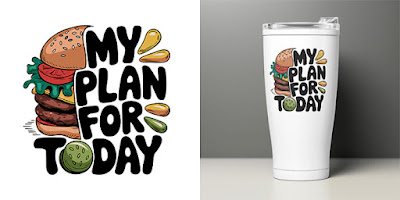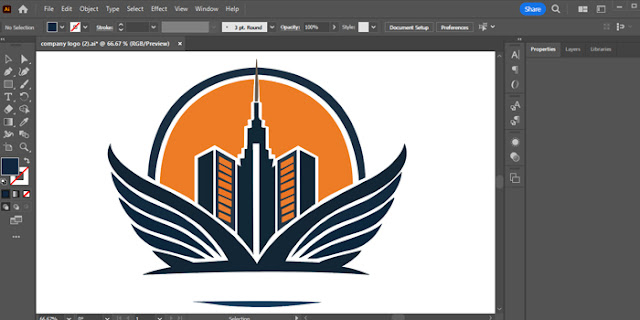How To Create 3D Puff Embroidery Designs: A Step-by-Step Guides
You may have noticed the striking raised designs on a popular sports cap or a stylish hoodie and wondered how they're created. 3D embroidery has become widely used, appearing in everything from fashion to corporate branding. If you're aiming to enhance your projects with this unique effect or are simply curious about how these bold designs come to life, you're in the perfect spot. We'll guide you through the process, step by step, to help you achieve that textured, standout appearance!
What is 3D Puff Embroidery?
3D Puff Embroidery is a specialized technique used to create bold, raised designs by incorporating foam beneath the embroidery stitches. This method enhances the depth and dimension of the artwork, making the design stand out prominently on fabrics like caps, jackets, and bags. 3D puff embroidery digitizing is essential for crafting high-quality 3D puff patches, ensuring precise stitch coverage and a professional finish. These patches are long-lasting, visually striking, and maintain their fullness over time, adding an eye-catching and aesthetic appeal to any design.
What Makes 3D Puff Embroidery So Special?
Well, puff embroidery is catching on these days, and it’s easy to see why. Essentially, it's a technique that involves using foam to create designs that ‘puff up’ into a 3D effect. The recent advancements in embroidery technology have made now simpler for both professionals and hobbyists to create standout embroideries with the method.
While you might typically spot puff stitch on baseball caps, it’s starting to show up on all sorts of apparel, like polo shirts and jackets. And there's also a growing trend of using 3D in more creative ways, from custom 3D patches to intricate designs within larger embroidered projects. This not only adds a visual appeal to items but also brings a tactile element to them.
Easy Steps to Kick Off 3D Embroidery
1) Puff Design Preparation
The first step is selecting and creating the right design. Bold and simple designs are your best bet since intricate details don’t always translate well with the puff effect. It's good to incorporate clear outlines and solid color areas to make the most of the foam. Also, think about the final puff effect you want and consider the height and shape to make sure it fits your design vision.
2) Getting The Fabric Ready
Next, you have to choose the appropriate fabric type. Heavier fabrics like polyester, cotton, twill, and denim are perfect for puff embroidery since they can handle the extra bulk of the foam without losing their shape. While talking about stabilizers, the fabric you choose plays a big role in your decision.
For sturdy fabrics like denim or cotton, tear-away stabilizers work well. On the other hand, stretchy fabrics like knits need cut-away stabilizers to keep your design looking sharp.
Here's a pro tip: hoop your fabric tightly to make sure it's flat and wrinkle-free. Use alignment marks to position it perfectly, and make sure it's secure in the hoop.
3) Adding Foam or Interfacing for Perfect 3D Embroidery
If you want a bold, more dramatic, raised puff effect, foam is your best bet. For subtler, textured 3d embroidery designs, go with interfacing. Cut foam slightly larger than your design to ensure it covers everything and provides solid support. Be sure to use a fabric adhesive that’s made for foam or interfacing. Apply the glue to the back of your chosen material, press it onto your fabric, and wait until it’s completely dry.
Just a little advice: Before you begin your 3D design, use a run stitch to lock down the fabric. It really helps keep things in place.
4) Digitizing Your Artwork
So, up to this point, you’ve got your design, fabric, and material ready; now it’s time to turn the design into a digitized file for a 3D embroidery machine. This involves a high level of skill, and you have to spend several hours working on it to use digitizing software properly.
Before you start 3D puff embroidery digitizing, it's important to set the design dimensions to ensure the design file in the software matches those crucial elements. Satin stitch is the best stitch type here, as it securely locks the foam under the thread, giving you that bold, raised effect. Wilcom and Hatch are the go-to digitizing software for perfect 3D puff embroidery, providing all the features you need.
Helpful hint: For a 3D puff design, always aim for a stitch density of 0.18. It gives the design a much better result!
5)Embroidery Digitizing Process
Alright, the next thing to do is to get down to real fun and start stitching those 3D puffs you’ve been excited about. At this step, there are a few things that you have to keep in mind, like setting up your machine, choosing the right threads, and following the correct embroidery sequence.
Thicker, high-quality threads usually work best for a bold, pronounced effect and a smooth finish. You have to fine-tune your machine settings to match the 3D puff technique, focusing on speed and needle choice. Tension is crucial too. Adjust it carefully to avoid puckering and ensure those stitches come out just right. After stitchout, remember to remove any excess foam to keep your design looking crisp and clean.
6) Perfecting Puff Embroidery with Finishing Touches
And finally, you’ve got your 3D puff just the way you want it; now this last step is about ensuring everything’s just right. Check for any loose threads, puckering, or leftover foam. Trim excess threads around the edges with a sharp pair of scissors. Make sure the raised details are clean and distinct. You can also add some extra embellishments or details to give your 3D puff embroidery that final finishing touch.
Tips for Jaw-Dropping 3D Puff Embroidery
1. Don't be afraid to mix things up! Combine felt, foam, and different fabrics. It’s a fun way to make your 3D embroidery designs stand out with unique, multi-dimensional aesthetics.
2. To achieve great 3D embroidery, ensure the design width stays within 5mm to 12mm.
3. Try with metal threads or beads for an eye-catching texture. You can also experiment with unconventional elements, like leather or cork, to give your project a fresh twist.
4. Keep an eye out for wear and tear, especially around the edges and the foam areas.
5. And most of all, stay updated with the latest trends and techniques in 3D embroidery. Online courses, workshops, and tutorials can provide valuable insights and new methods.
In summary
3D puff embroidery is more than just a trend; it's a way to make your creations really stand out. In this guide, we have discussed the process from start to finish. You learned the significance of choosing the right fabric and stabilizer, creating your design and stitching it all together. We’ve shared some handy tips to help you nail those finishing touches on your artwork. Experimenting and refining your technique is the key to making your 3D embroidery designs stand out.
Cre8iveSkill’s 3D puff embroidery digitizing services are designed to meet your unique needs, offering a wide range of customization options to bring your vision to life. Our expert advice, wide range of customization options, and hassle-free revision policy ensure you get exactly what you want.



























